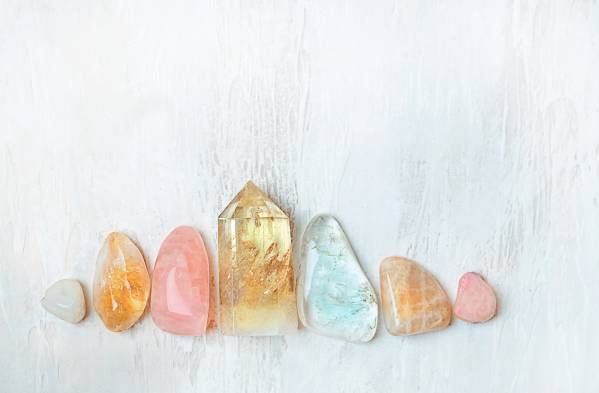Many people use the words crystal and mineral interchangeably, but for geologists and crystal collectors, these words have different meanings. While the two seem to be alike, they are actually very different. The major distinction between minerals and crystals is that minerals are substances that occur naturally, while crystals can be both natural and artificial.
Despite the fact that both are of the same nature, it’s crucial to understand their differences. Read on to learn more about these substances and how they differ.

Minerals
Minerals can be found in the environment. They are formed naturally from geological processes and serve as the foundation for practically everything on the planet. Also, they are found in rocks, ores, and natural mineral reserves. While rock is composed of numerous minerals fused together to produce a whole solid, minerals are separate elements with the same atomic structure throughout. Examples of minerals are quartz, calcite, and sulfur.
- Properties
Minerals have a highly organized atomic structure as well as a distinct chemical composition. Properties such as color, shape, and hardness are used to identify the most common minerals in the Earth’s crust.
Certain minerals can develop under the same conditions and are thus likely to be found in the same rock, whereas others form under totally different conditions will never exist in the same source. Talc, for example, is very delicate and can be easily scratched. On the other hand, quartz is pretty hard and can’t be easily damaged.
Crystals
Basically, a crystal is a mineral that exists as a single structure rather than being incorporated into an aggregated solid, such as a rock. The atoms in a crystal are formed in an extremely rigid structural pattern, resulting in a hard solid with a geometric, nearly artificial shape. Civilizations have traditionally valued crystals, and many stones are still believed to have metaphysical qualities, such as the potential to draw love or wealth into the owner’s life if carried or presented.
While the supernatural capabilities of crystals are still disputed, the theory that crystals emit vibrations is a scientific claim. It is these vibrations that are said to be connected to the energy of the universe. On the other hand, the vibrations in crystals may also be used in scientific research. Scientists and geologists are discovering how to make electronic gadgets that rely on these minerals to enhance energy efficiency.
Differences
Although there is considerable overlap between minerals and crystals, there are three major distinctions intricacies between them:
- Order Of Magnitude
If these terms were arranged in evolutionary order, minerals would come first, followed by crystals. Minerals are the primary element and may be used to explain a variety of natural elements such as crystals. Accordingly, minerals are a foundational component of crystals. Understanding the order of magnitude makes it much easier to determine where each term belongs and how it is used when discussing numerous assets.
- Use
Minerals are employed in many aspects of life, and they are used in more practical ways. For example, mined minerals are an essential component of human nutrition. Iron, zinc, selenium, and calcium are all essential elements for the body to operate on a daily basis. Micronutrient-rich foods (or vitamins and minerals) can help build cells, combat dangerous infections, and enhance the immune system. In addition, minerals are also used in construction, particularly in the manufacture of cement, bricks, and pipes, as well as in the construction of buildings and highways.
On the other hand, crystals are used for ornamental purposes and in some cases—as health aids—which would include healing. While there are conflicting claims regarding its legibility, crystals definitely have a place in this niche. Other than that, crystals may also be found in other industries such as watchmaking and jewelry making.
- Appearance
Because there are so many different types of minerals, their appearance will vary the most. This implies that the shape, size, texture, and every other feature might differ while still being defined as a mineral. Minerals can be distinguished by their physical properties. Their physical qualities are connected to their chemical structure and bonding. Some properties, such as a mineral’s hardness, are more relevant for identification than others. Color is easily visible and evident, although it is typically less accurate than other physical attributes.
In the case of crystals, variation is usually observed depending on the element that binds the atoms. This results in crystals having various shapes, sizes, and appearances. The dynamic structure of each crystal, which is made up of highly organized patterns of molecules called lattices, is what makes it different and remarkable. Shapes and facets with specific sorts of symmetry are formed when their pattern repeats itself. Crystals are classed into varying forms in stone identification, which determine their aesthetic and energy qualities.
Final Thoughts
While the names are still used interchangeably, distinguishing between crystals and minerals is important. A mineral’s value is not the same as a crystal’s value. These intricacies can have a major impact on judging the value of something and what it means to be an asset. Knowing all of these intricacies can make their differences easier to identify.





